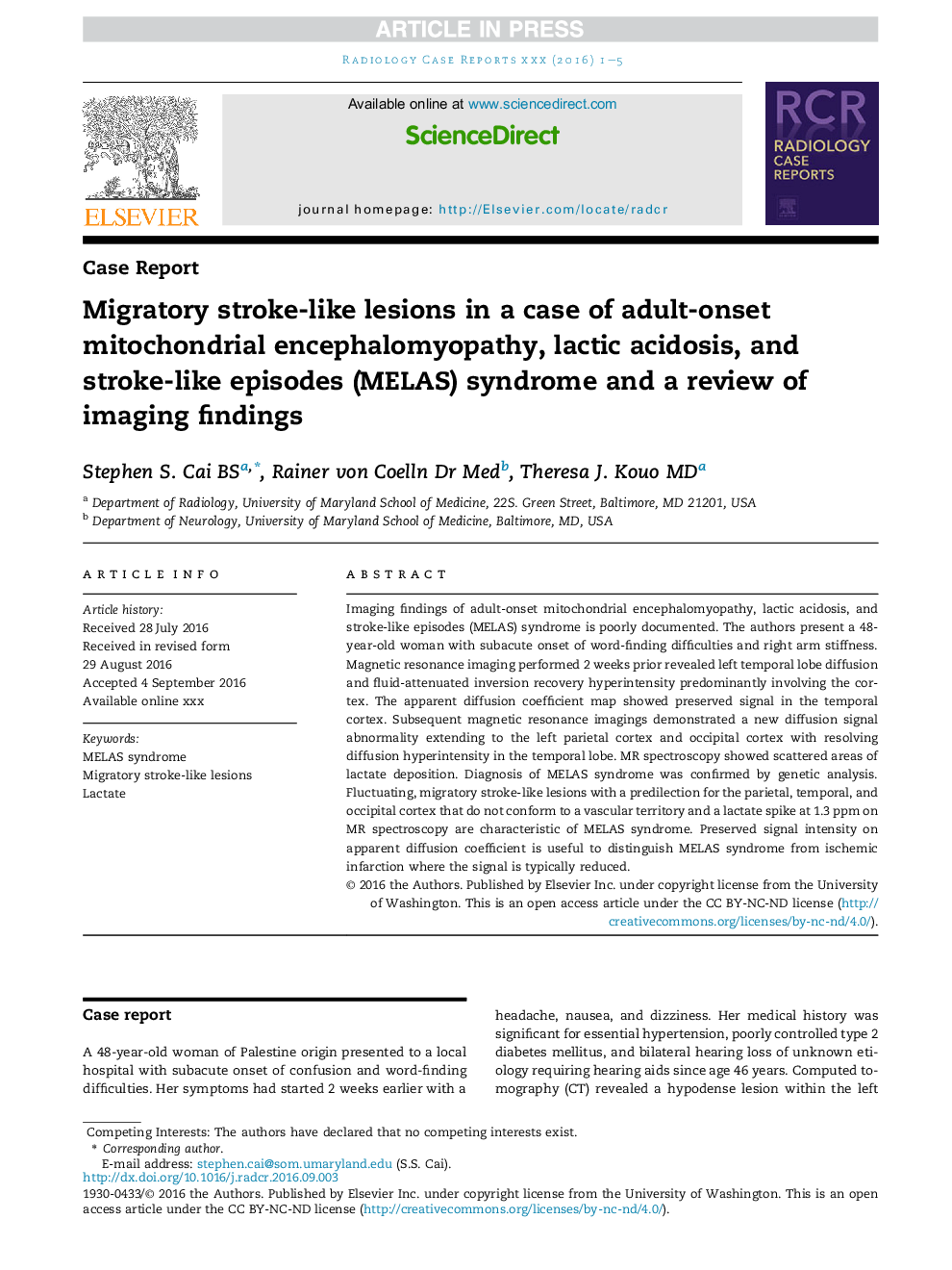| Article ID | Journal | Published Year | Pages | File Type |
|---|---|---|---|---|
| 8825568 | Radiology Case Reports | 2016 | 5 Pages |
Abstract
Imaging findings of adult-onset mitochondrial encephalomyopathy, lactic acidosis, and stroke-like episodes (MELAS) syndrome is poorly documented. The authors present a 48-year-old woman with subacute onset of word-finding difficulties and right arm stiffness. Magnetic resonance imaging performed 2 weeks prior revealed left temporal lobe diffusion and fluid-attenuated inversion recovery hyperintensity predominantly involving the cortex. The apparent diffusion coefficient map showed preserved signal in the temporal cortex. Subsequent magnetic resonance imagings demonstrated a new diffusion signal abnormality extending to the left parietal cortex and occipital cortex with resolving diffusion hyperintensity in the temporal lobe. MR spectroscopy showed scattered areas of lactate deposition. Diagnosis of MELAS syndrome was confirmed by genetic analysis. Fluctuating, migratory stroke-like lesions with a predilection for the parietal, temporal, and occipital cortex that do not conform to a vascular territory and a lactate spike at 1.3 ppm on MR spectroscopy are characteristic of MELAS syndrome. Preserved signal intensity on apparent diffusion coefficient is useful to distinguish MELAS syndrome from ischemic infarction where the signal is typically reduced.
Keywords
Related Topics
Health Sciences
Medicine and Dentistry
Radiology and Imaging
Authors
Stephen S. BS, Rainer Dr Med, Theresa J. MD,
